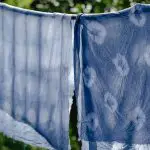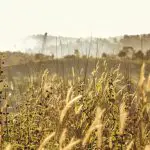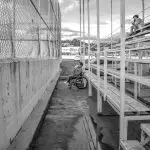Looking to master your DIY landscape projects? Did you know that using the right fabrics can reduce maintenance time by up to 50%?
Discover the 5 must-have fabrics that will elevate your outdoor spaces. From weed control fabric to erosion control matting, each fabric plays a crucial role in creating a sustainable and visually appealing landscape.
Whether you're aiming for a pristine garden or a sturdy pond, understanding the benefits of geotextile and pond liner fabrics is essential.
Get ready to take your landscaping skills to the next level with these versatile and durable materials.
Key Takeaways
- Weed control fabrics reduce maintenance time by up to 50% and prevent weed growth by blocking sunlight and germination of weed seeds.
- Erosion control fabrics prevent soil erosion, maintain slope stability, and protect against landslides, especially in areas with insufficient vegetation.
- Landscape fabrics act as a barrier to suppress weed growth, prevent soil erosion, and allow water to pass through while reducing evaporation.
- Geotextile fabrics are versatile materials used for weed control, soil stabilization, drainage, and erosion control, providing structural support in retaining walls and reducing maintenance.
Weed Control Fabric
When planning your DIY landscape projects, you'll need to consider using weed control fabric to prevent unwanted growth and maintain a tidy outdoor space. Weed control fabric is an essential tool for any gardener looking to minimize the time spent weeding and maximize the time enjoying their garden.
This fabric is designed to suppress the growth of weeds by blocking out sunlight and creating a barrier that prevents weed seeds from germinating.
One of the key factors to consider when choosing weed control fabric is its durability. Look for a fabric that's thick and sturdy enough to withstand the elements and regular foot traffic. A durable fabric will ensure that it effectively suppresses weed growth for an extended period, saving you time and effort in the long run.
Additionally, a high-quality weed control fabric will allow water and nutrients to penetrate the soil while still providing excellent weed suppression.
Investing in a durable weed control fabric won't only save you from the hassle of constant weeding but also contribute to the overall health and aesthetics of your garden.
Erosion Control Matting
You'll also want to consider using erosion control matting as another essential fabric for your DIY landscape projects. Erosion control matting is a crucial component in preventing soil erosion and maintaining the stability of slopes in your landscape. This fabric is designed to provide a protective layer that helps to stabilize soil and prevent it from being washed away by water or wind.
Erosion control matting is particularly effective on steep slopes where erosion is a common concern. By securing the soil in place, it reduces the risk of landslides and ensures the long-term stability of your landscape features. This fabric is especially useful in areas where vegetation alone may not provide sufficient erosion control.
When selecting erosion control matting, consider the specific needs of your project. Different types of matting are available, each offering unique benefits depending on the slope angle, soil type, and environmental conditions. By choosing the right erosion control matting, you can effectively mitigate erosion and promote slope stabilization in your landscape, ensuring its longevity and visual appeal.
Landscape Fabric
To effectively control weed growth and promote water permeability in your landscape, use a high-quality landscape fabric as the foundation for your DIY projects. Landscape fabric offers a multitude of benefits that can greatly enhance the durability and aesthetics of your outdoor space.
Here are some key landscape fabric benefits to consider:
- Weed suppression: Landscape fabric acts as a barrier, preventing weeds from taking root and competing with your plants for nutrients and water.
- Soil erosion prevention: By stabilizing the soil, landscape fabric helps to minimize erosion caused by wind and water, protecting the integrity of your landscape.
- Moisture retention: The fabric allows water to pass through while reducing evaporation, ensuring that your plants receive adequate hydration.
For successful installation, ensure the fabric is properly secured and overlaps are adequately covered to prevent weed penetration. When cutting the fabric to fit around plants, make precise incisions to minimize potential tearing. Additionally, consider using landscape fabric pins or staples to keep the material firmly in place.
Geotextile Fabric
If you frequently tackle DIY landscape projects, you'll appreciate the practical benefits of geotextile fabric. Geotextile fabric is a versatile material with a wide range of applications in landscaping. It's commonly used for weed control, soil stabilization, drainage, and erosion control. When used beneath hardscapes, such as gravel pathways or patios, geotextile fabric prevents the mixing of soil and stone, reducing maintenance and preserving the integrity of the surface. Additionally, it can be used in retaining walls to prevent soil erosion and provide structural support.
When it comes to fabric installation techniques, it's essential to properly prepare the area by removing any existing vegetation and debris. The fabric should be laid out and cut to fit the specific area, ensuring that it overlaps and is securely anchored to prevent shifting. When using geotextile fabric for drainage, it's crucial to install it in a way that promotes water flow while preventing soil migration.
Pond Liner Fabric
Pond liner fabric provides essential waterproofing for your DIY landscape projects. When it comes to creating a pond or water feature in your garden, choosing the right pond liner is crucial for ensuring its longevity and functionality.
Here are some key points to consider for pond liner installation:
- Proper Site Preparation: Before installing the pond liner, ensure that the site is free from any sharp objects, rocks, or debris that could potentially puncture the liner.
- Choosing the Right Pond Liner: Selecting a high-quality pond liner is essential for a successful installation. Consider factors such as the size and shape of your pond, as well as the material of the liner, whether it's rubber, PVC, or EPDM.
- Installation Techniques: Whether using preformed liners or flexible liners, understanding the best installation techniques is vital. Properly securing the liner and ensuring a proper fit will prevent leaks and maintain the structural integrity of the pond.
When it comes to your DIY landscape project, investing in a durable and reliable pond liner fabric is a fundamental step in creating a beautiful and long-lasting water feature.
Frequently Asked Questions
Can I Use Weed Control Fabric in a Vegetable Garden?
Yes, you can use weed control fabric in your vegetable garden. It helps prevent weed growth, conserves moisture, and warms the soil. However, consider organic alternatives such as mulch and newspaper for a more natural approach.
What Is the Best Way to Secure Erosion Control Matting on a Steep Slope?
To secure erosion control matting on a steep slope, use biodegradable stakes or staples. Place them at regular intervals along the edges and seams. Ensure the matting is taut and properly overlapped. This method is considered one of the best practices for securing erosion control matting.
Is Landscape Fabric Suitable for Use Under Gravel Pathways?
Yes, landscape fabric is suitable for use under gravel pathways. It helps prevent weed growth and provides a barrier between the gravel and soil. Make sure to install it properly, and consider other fabric alternatives for specific project needs.
Can Geotextile Fabric Be Used for Constructing Retaining Walls?
Yes, geotextile fabric can be used for constructing retaining walls. It's a durable material that provides excellent reinforcement and erosion control. The fabric is also great for constructing a vegetable garden or natural-looking pond.
What Type of Pond Liner Fabric Is Best for a Natural-Looking Pond?
For a natural pond that creates a thriving wildlife habitat, the best pond liner fabric is a durable, fish-safe EPDM rubber. It balances the ecosystem, allowing plants and wildlife to flourish while maintaining the pond's integrity.
- Can You Get Organza Wet? - April 23, 2024
- Why Is Organza so Popular? - April 23, 2024
- What Do You Wear With Organza? - April 23, 2024








